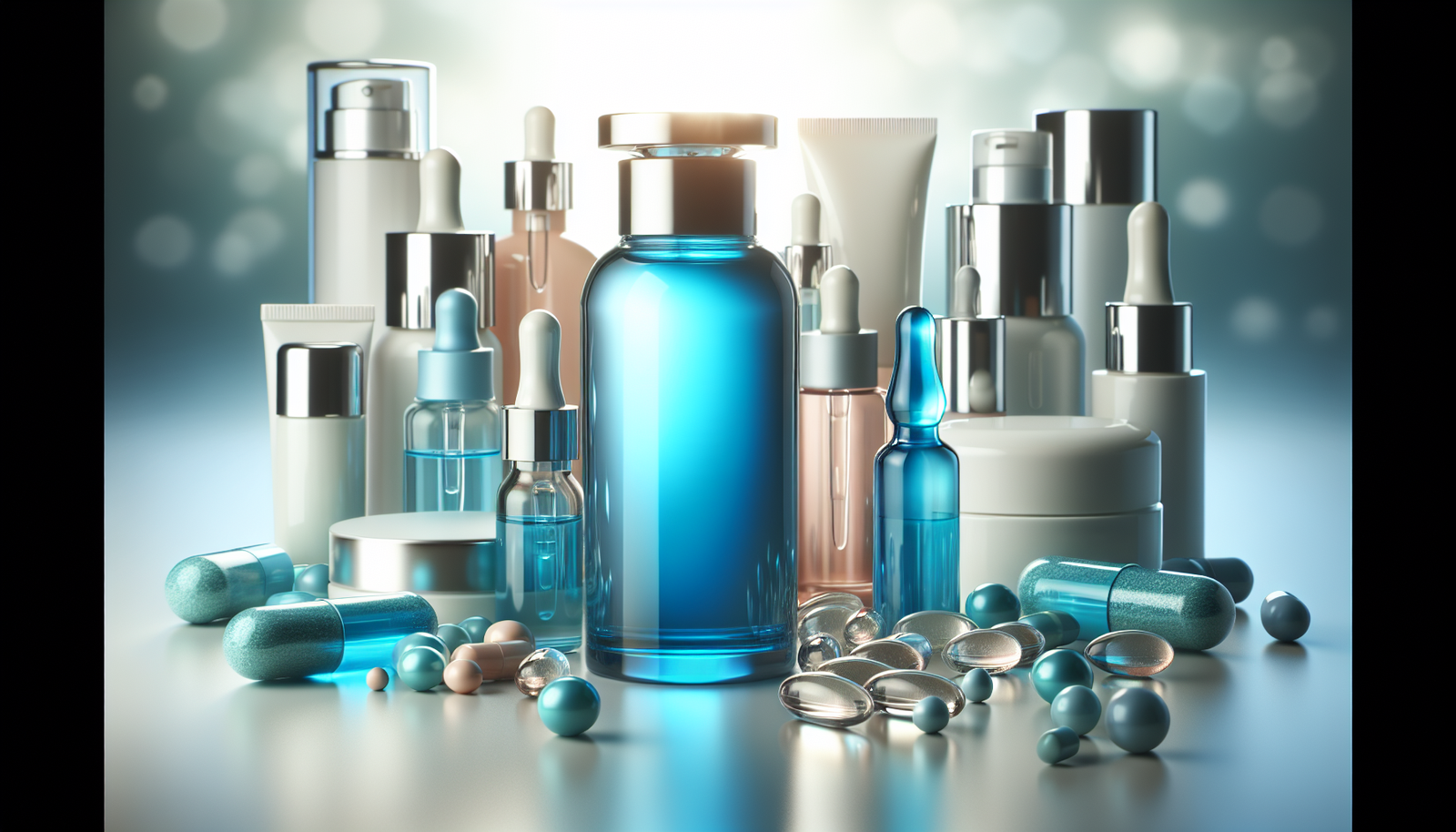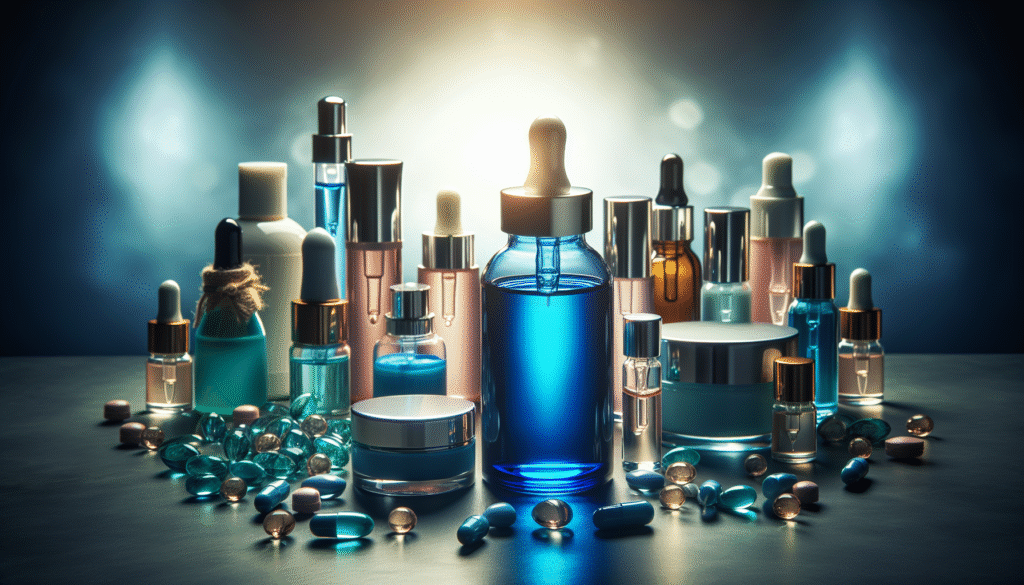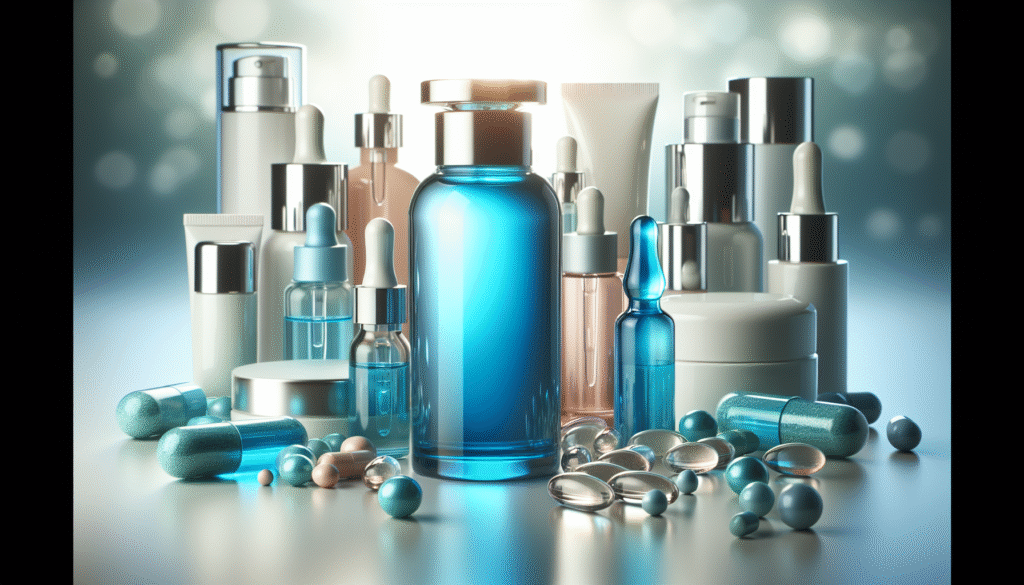
Have you ever considered how your choice of anti-aging treatment could impact both your skin and overall well-being? The beauty and wellness industry is constantly evolving, offering a plethora of solutions promising youthful skin. Among these options, Methylene Blue has garnered attention due to its unique properties. This comparative analysis aims to highlight the strengths and weaknesses of Methylene Blue alongside other popular anti-aging treatments, enabling you to make an informed choice.
Understanding Methylene Blue
What Is Methylene Blue?
Methylene Blue is a synthetic dye that has been widely used in medicine and various scientific applications since the late 19th century. Initially employed for its antiseptic properties, it has recently surfaced in dermatological circles as a potential anti-aging treatment. Methylene Blue operates by efficiently penetrating skin layers and providing cellular benefits, leading to enhanced skin health.
Mechanism of Action
Methylene Blue plays a vital role in cellular respiration. It functions as an electron carrier, which can help to optimize mitochondrial function—the powerhouse of your cells. By increasing energy production at the cellular level, Methylene Blue may contribute to skin rejuvenation, minimizing the visible signs of aging.
Beneficial Properties
The key beneficial properties of Methylene Blue include its antioxidant capabilities, its ability to improve circulation, and its potential to stimulate collagen production. By reducing oxidative stress, it helps to combat free radicals, which are responsible for premature skin aging.
Alternative Anti-Aging Treatments
Hyaluronic Acid
Overview
Hyaluronic Acid (HA) is a naturally occurring substance in your body that helps maintain skin hydration and plumpness. As you age, the levels of HA decrease, leading to dryness and loss of elasticity.
Mechanism of Action
Hyaluronic Acid works by attracting and retaining moisture in the skin. It can hold up to 1,000 times its weight in water, making it an effective hydration agent. When applied topically or injected, HA fills the skin, resulting in a smoother appearance and reducing the appearance of fine lines and wrinkles.
Benefits and Drawbacks
| Benefits | Drawbacks |
|---|---|
| Increases skin hydration | Temporary effects; routine treatments required |
| Reduces fine lines and wrinkles | Potential for allergic reactions |
| Non-invasive and well-tolerated | May not address deep wrinkles |
Retinoids
Overview
Retinoids are vitamin A derivatives commonly used in skincare for their anti-aging properties. They work at a cellular level to accelerate skin cell turnover, encouraging the growth of new, healthy skin.
Mechanism of Action
Retinoids enhance cellular turnover, unclog pores, and promote collagen synthesis. This leads to improved skin texture and reduced signs of aging.
Benefits and Drawbacks
| Benefits | Drawbacks |
|---|---|
| Effective for reducing wrinkles | Can cause irritation and redness |
| Reduces hyperpigmentation | Requires time to see results |
| Enhances skin texture | Sensitive to sunlight; must use sunscreen |
Peptides
Overview
Peptides are short chains of amino acids that serve as the building blocks of proteins in the skin, such as collagen and elastin. With age, the natural production of these proteins declines, leading to sagging skin.
Mechanism of Action
Peptides signal your skin to produce more collagen and elastin. They enhance skin barrier function and promote hydration.
Benefits and Drawbacks
| Benefits | Drawbacks |
|---|---|
| Boosts collagen production | Effects vary by individual |
| Improves skin elasticity | Often requires regular application |
| Minimal side effects | Can be slow to yield noticeable results |

Comparing Methylene Blue to Each Treatment
Methylene Blue vs. Hyaluronic Acid
When comparing Methylene Blue to Hyaluronic Acid, one recognizes both hydration and cellular benefits. While HA excels in moisture retention, Methylene Blue’s true value lies in its ability to enhance cellular energy production. Your decision may depend on whether you prioritize hydration or seek comprehensive cellular rejuvenation.
Methylene Blue vs. Retinoids
Both treatments focus on fostering healthier skin but take different approaches. Retinoids accelerate skin cell turnover, while Methylene Blue supports cellular health from within. If your primary concern is fine lines and skin texture, retinoids may be targeted for those issues, but Methylene Blue could serve as an adjunct treatment that boosts vitality.
Methylene Blue vs. Peptides
Peptides support the skin’s structural integrity, while Methylene Blue concentrates on energy production and antioxidant protection. If you seek to enhance skin elasticity and structure, peptides may be the preferred choice; however, integrating Methylene Blue into your regime could amplify both approaches by revitalizing skin cells.
Administering Methylene Blue
Application Methods
Methylene Blue can be applied topically or taken as an oral supplement, depending on your comfort and treatment goals. For skin application, serums containing Methylene Blue are gaining popularity. The topical route allows for direct application to the affected areas, often combined with other beneficial ingredients.
Best Practices for Use
It is essential to approach any new treatment with caution. Conduct a patch test to ensure you do not experience adverse reactions. Should you decide to try Methylene Blue, consult with a dermatologist or healthcare provider first to assess its compatibility with your skin type and other treatments.

Potential Side Effects
Every treatment option has its risk factors. Methylene Blue can cause transient staining of the skin, particularly at higher concentrations. This temporary discoloration can tarnish the application experience. Other side effects may include irritation in sensitive individuals; hence, starting with a low concentration is advisable.
Comparing Effectiveness: Clinical Evidence
Research Studies
A growing body of research supports Methylene Blue’s efficacy in anti-aging applications. Clinical studies predominantly focus on its antioxidant properties and cellular rejuvenation capabilities, showcasing improvements in skin condition when used consistently over time.
Efficacy of Alternatives
Similarly, studies validate the effectiveness of treatments like Hyaluronic Acid and Retinoids in diminishing the appearance of aging skin, largely due to their hydration and cellular turnover properties. Each treatment presents unique advantages, but the specificity of results may vary among individuals.
Cost Considerations
Methylene Blue
The cost of Methylene Blue products varies significantly based on formulation, concentration, and the brand’s reputation. Expect to pay more for high-quality serums with additional beneficial ingredients.
Other Treatments
| Treatment | Average Cost Range |
|---|---|
| Methylene Blue | $30 – $150 per product |
| Hyaluronic Acid | $20 – $200 per product |
| Retinoids | $10 – $300 (prescription options) |
| Peptides | $30 – $120 per product |
When considering anti-aging treatments, it is advisable to assess the cost relative to the potential benefits. Remember, the most expensive option is not always the most effective for your unique skin needs.
Personalization of Treatment
Identifying Your Needs
Understanding your skin type and specific needs is crucial when selecting an anti-aging treatment. Often, individual skin concerns such as dryness, fine lines, or increased pigmentation may dictate which treatment is most suitable.
Consultation with Specialists
A personalized consultation with a dermatologist can provide valuable insights into your skin health. A tailored approach that considers your medical history, skin type, and lifestyle can facilitate a more effective treatment strategy, resulting in better outcomes.
Conclusion
When weighing your options for anti-aging treatments, Methylene Blue presents an intriguing alternative that combines traditional dermatological principles with modern scientific advancements. While it displays remarkable properties that can enhance your skin’s vitality, it is essential to consider how it fits into a comprehensive skincare regimen alongside established treatments like Hyaluronic Acid, Retinoids, and Peptides.
Your journey toward youthful skin need not be overwhelming. By understanding the mechanisms, benefits, and potential drawbacks of each treatment option, you can make informed choices that align with your individual goals and skin health aspirations. Regardless of your selection, consistency and care are paramount to achieving the results you desire.